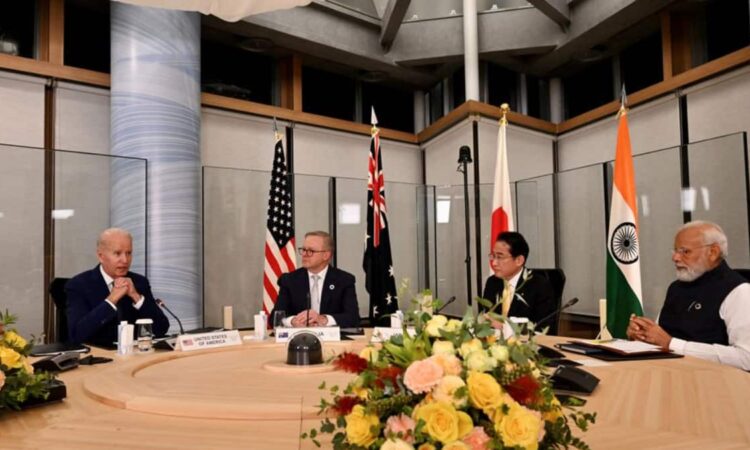Fostering Innovation and Collaboration: The Quad Investors Network’s Quest for Technological Advancement

In the coming 15 years, technology will undergo more transformation due to AI and other cutting-edge advancements than it has over the last century. This wave of change is set to generate trillions in new market value and reshape the world.
Currently, a void exists where investors and companies within the Quad nations cannot easily exchange insights, investments, and partnership prospects. This lack of cooperation hampers technological progress, innovation, and strategic solutions.
At the Quad Leaders summit held in Tokyo last year, President Biden and counterparts PM Kisihida-san, PM Modi, and PM Albanese unveiled the Quad Investors Network (QUIN). This initiative aims to expedite cross-border investment and technology collaborations in “critical and emerging technologies” among Quad nations and trusted Indo-Pacific countries.
Following the recent Quad summit in Hiroshima, the Quad Investors Network was formally established. This independent forum, comprising public, private, and philanthropic stakeholders from the Quad nations, was created to foster collaboration and co-investment in crucial technologies and supply chain resilience. Its goal is to address significant economic and security challenges in the Indo-Pacific region. Membership in the network is invite-only.
Governments participating in the security dialogue involving Australia, India, Japan, and the United States welcomed the network’s formation and its ongoing efforts to expand capital and partnership opportunities in critical and emerging technologies across the Quad.
Jake Sullivan, US National Security Advisor, emphasized the profound influence of critical and emerging technologies on the future. He highlighted that the Quad Investors Network showcases the collective potential of Quad nations to mobilize talent and investment for a more prosperous, resilient, and innovative Indo-Pacific.
As part of its launch, the Quad Investors Network introduced an Advisory Board consisting of esteemed business, investment, and thought leaders from the Quad nations. Additionally, five expert working groups were established, each focusing on artificial intelligence, semiconductors, clean energy, critical minerals, mobile networks, and quantum information sciences.
The Advisory Board, composed of representatives from the Quad nations, takes a central role in the network. It sets the agenda, provides strategic guidance, leads working groups, spearheads investments, and engages with governments across the Quad. Dr Vivek Lall, Chief Executive General Atomics Global Corporation, along with other prominent figures, is part of this advisory board.
Who is Dr Vivek Lall?
He is a distinguished aerospace scientist, and has been instrumental in enhancing defence trade and cooperation between India and the United States. His efforts have bolstered defence industry ties between the two nations, enabling India to acquire advanced defence technologies from the US.
His leadership led to a landmark agreement authorizing the release of armed category 1 UAVs to India. He played a pivotal role as Chief Executive of General Atomics during the negotiations.
Currently, he is at the forefront of negotiations for the acquisition of 31 MQ-9B Predator drones from General Atomics, a deal worth under US$3 billion. His advocacy for India’s defence modernization underscores the importance of collaborative ventures in advanced defence technologies.
Dr Lall’s contributions have earned recognition from world leaders, including multiple US presidents and heads of state from Europe and Japan. His roles at Boeing and Lockheed Martin Aeronautics allowed him to lead significant defence deals, further cementing his influence.
Notably, he has been a driving force in promoting and selling Predator drones on a global scale, showcasing their relevance in defence operations worldwide. Under his leadership, General Atomics has successfully marketed and sold Predator drones to various countries, expanding the global market for these advanced unmanned aerial vehicles. This has enabled countries to enhance their surveillance, intelligence gathering, and strike capabilities.






